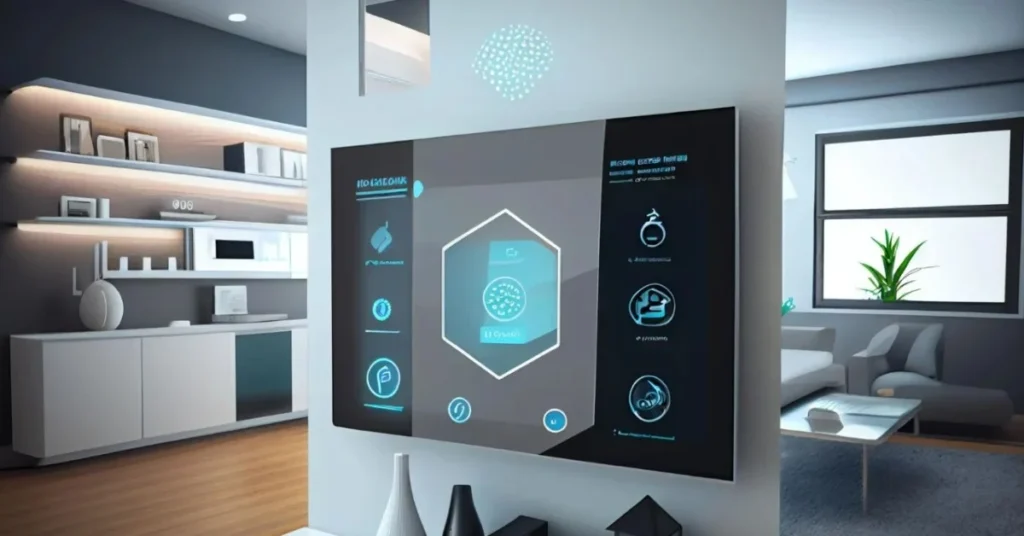As we step into 2025, smart home technology is redefining the way we live by merging convenience, sustainability, and cutting-edge innovation. With systems that adapt to your unique needs and habits, homes are smarter and more efficient than ever. From AI-powered devices to sustainable solutions like energy storage systems and water conservation technologies, this year’s advancements prioritize eco-consciousness and user customization. Enhanced security systems, immersive entertainment experiences, and health-focused devices also take center stage, creating homes that are not only intelligent but also safe and comfortable. Whether you’re exploring home automation for the first time or upgrading your existing setup, 2025 offers an exciting array of possibilities to transform your living space.
Revolutionary Energy Management Systems
Energy efficiency has become a cornerstone of smart homes, with innovations that save both power and costs.
- Smart Thermostats: These devices optimize heating and cooling, adapting to routines and seasonal needs. Their integration with solar energy systems ensures maximum sustainability.
- Energy Monitoring Tools: Real-time tracking of energy consumption provides actionable insights to homeowners. By using dynamic pricing algorithms, households can shift energy use to off-peak hours to save money.
- Smart Grids: As renewable energy adoption rises, smart grids efficiently distribute power, enhancing reliability and reducing waste.
Future-Ready Kitchen Technology
The kitchen has become a hub for smart appliances that simplify daily routines while reducing waste.
- AI-Powered Cooking Assistants: These devices suggest recipes, track your pantry inventory, and adjust cooking times for perfection.
- Smart Refrigerators: Advanced features like remote access via apps allow you to check fridge contents while shopping, minimizing food waste.
- Energy-Efficient Dishwashers: By detecting load size and dirt levels, these appliances customize cycles to conserve water and electricity.
Cutting-Edge Home Security Systems
Home security in 2025 combines AI-driven technology with user-friendly designs for ultimate safety.
- Facial Recognition Cameras: These cameras differentiate between family, guests, and unknown visitors, sending instant alerts if needed.
- Smart Door Locks: Offering features like biometric authentication and real-time monitoring, they provide convenience and peace of mind.
- Integrated Emergency Systems: Smart homes now directly connect with authorities, improving response times in emergencies.
Immersive Entertainment Systems
Smart homes are redefining entertainment with immersive technologies.
- Virtual Reality (VR) Systems: Whether gaming or watching movies, VR brings an unparalleled level of engagement to living rooms.
- Voice-Controlled Entertainment Hubs: These allow seamless control over devices like TVs, speakers, and lights for a tailored experience.
- Multi-Room Audio: High-quality sound systems synchronize music throughout your home for a unified experience.
Sustainability at the Core
Sustainability drives innovation in smart home technology in 2025.
- Smart Irrigation Systems: Using real-time weather data, these systems conserve water by delivering it precisely where and when it’s needed.
- Solar-Powered Devices: Gadgets like outdoor lights and small appliances now run entirely on solar energy, reducing electricity bills.
- Eco-Friendly Materials: Smart devices are increasingly being crafted from recycled or biodegradable components.
Automation and Robotics
Automation is taking over mundane household tasks, thanks to intelligent robots.
- Robot Vacuums and Mops: These devices can map entire homes, clean efficiently, and even empty their bins autonomously.
- Pet Care Robots: Smart feeders and health monitors make it easier to care for pets while you’re away.
- Laundry Folding Machines: These robots save hours by folding clothes neatly after washing and drying.
Health and Wellness Enhancements
Smart homes in 2025 are designed with health in mind.
- Air Quality Sensors: These devices continuously monitor and improve indoor air quality by filtering out pollutants and allergens.
- Circadian Lighting: Lighting systems that mimic natural daylight cycles promote better sleep and improve mental well-being.
- Wellness Zones: Homes now feature meditation and workout spaces equipped with virtual coaching and guided sessions.
Smart Furniture
Furniture has evolved into a fusion of comfort and technology integration.
- Ergonomic Smart Desks: These desks adjust height and posture settings automatically, ideal for remote workers.
- Tech-Enhanced Sofas: Built-in speakers, wireless charging ports, and temperature control make seating multi-functional.
- Smart Beds: They monitor sleep patterns and adjust settings to enhance rest and recovery.
AI-Driven Personal Assistants
Artificial intelligence is the backbone of home automation, making systems more intelligent and user-centric.
- Predictive Features: AI learns your habits, suggesting solutions and anticipating needs, like pre-warming your coffee machine in the morning.
- Seamless Connectivity: Assistants link all your devices, from thermostats to lights, into a unified system for effortless control.
- Real-Time Adaptation: These systems evolve with usage, becoming more intuitive over time.
Enhanced Connectivity
With a growing number of devices, homes require better connectivity to support smart ecosystems.
- Wi-Fi 7: The latest in wireless technology ensures ultra-fast speeds and stable connections for all devices.
- Mesh Networks: These eliminate dead spots, providing consistent coverage across large properties.
- 5G Integration: High-speed data transfer and instant device responsiveness enhance overall efficiency.
Why The Latest Innovations in Smart Home Technology for 2025 Matters
Smart home innovations in 2025 aim to make life simpler, safer, and more sustainable. With a focus on energy efficiency, health, and security, these technologies are transforming how we interact with our living spaces. Whether you’re automating daily tasks, reducing your environmental impact, or creating a personalized environment, the possibilities are endless.


